Morning Eye Candy: Sculptural Curve
Posted in Photography on May 26 2013, by Ann Rafalko
Not to be outdone by Manolo Valdés’ ladies and Philip Haas’ botanical busts, the ornamental alliums strike an artistic pose.
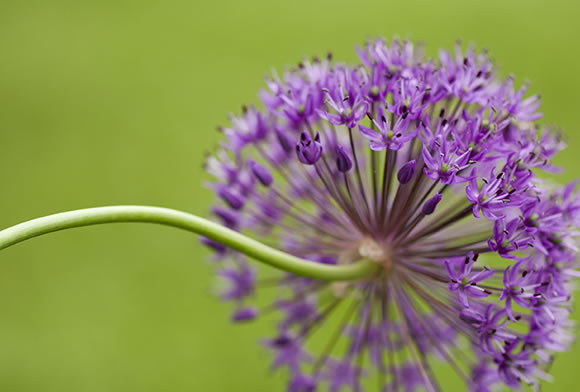
Photo by Ivo M. Vermeulen

Inside The New York Botanical Garden
Posted in Photography on May 26 2013, by Ann Rafalko
Not to be outdone by Manolo Valdés’ ladies and Philip Haas’ botanical busts, the ornamental alliums strike an artistic pose.

Photo by Ivo M. Vermeulen
Posted in Around the Garden on May 25 2013, by Ann Rafalko
Behind the scenes at the Ruth Rea Howell Family Garden. Now what do you suppose those buoys are for?
Photo by Ivo M. Vermeulen
Posted in Learning Experiences on May 24 2013, by Matt Newman
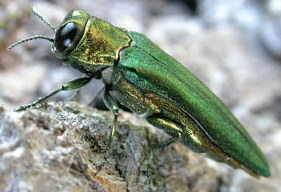 Notice an arborist with a little extra spring in her step? It’s not surprising. Against all odds, the Asian Longhorned Beetle (ALB) was finally ousted from Manhattan and Staten Island after a near 20-year reign; even New Jersey is claiming victory, putting us on the road to ALB eradication. But even if this loathsome pest is on the outs in the northeast, we’re not out of the woods—figuratively or literally—with the nagging issue of its accomplice, the Emerald Ash Borer (EAB). These invasive bugs don’t mop up their own infestations, much as we’d love it if they did—it takes awareness and action on everyone’s part to save our trees. And I’m talking about millions of trees in the end game.
Notice an arborist with a little extra spring in her step? It’s not surprising. Against all odds, the Asian Longhorned Beetle (ALB) was finally ousted from Manhattan and Staten Island after a near 20-year reign; even New Jersey is claiming victory, putting us on the road to ALB eradication. But even if this loathsome pest is on the outs in the northeast, we’re not out of the woods—figuratively or literally—with the nagging issue of its accomplice, the Emerald Ash Borer (EAB). These invasive bugs don’t mop up their own infestations, much as we’d love it if they did—it takes awareness and action on everyone’s part to save our trees. And I’m talking about millions of trees in the end game.
Since it was first discovered in New York in 2009, the invasive Emerald Ash Borer has killed tens of millions of ash trees, and its appetite is indiscriminate when it comes to variety. That leaves every last one of New York’s hundreds of millions of ash trees at risk—trees that not only define our landscape, but support American industry. And though good fences do make for good neighbors, these six-legged invaders aren’t partial to friendly truisms; it’s up to everyone to cooperate in looking out for New York’s flora at large.
Posted in Around the Garden on May 24 2013, by Ann Rafalko
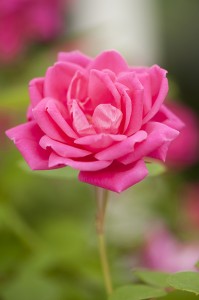 It’s summer! Or is it? Given the unpredictable weather of the past few weeks, I guess it comes as little surprise that several days of hazy, hot, and humid afternoons would end with spring reasserting herself just as we hit the three day, “unofficial start of summer” weekend. But don’t let that put a damper on your long weekend plans! We’ve got plenty of warmth, color, and activities to help you relax going into the new season.
It’s summer! Or is it? Given the unpredictable weather of the past few weeks, I guess it comes as little surprise that several days of hazy, hot, and humid afternoons would end with spring reasserting herself just as we hit the three day, “unofficial start of summer” weekend. But don’t let that put a damper on your long weekend plans! We’ve got plenty of warmth, color, and activities to help you relax going into the new season.
In the Enid A. Haupt Conservatory, Wild Medicine: Healing Plants Around the World continues to delight with a one-two punch of geeky knowledge and Renaissance beauty. Enjoy tasting stations featuring delicious and healthy treats made from chocolate, tropical fruits, and soothing tea around the Conservatory Courtyard Pools where the hardy waterlilies are again in bloom. You can also spend time with Philip Haas’ amazing Four Seasons, monumental sculptural renderings of the surreal paintings of Giuseppe Arcimboldo, “rendered in trompe l’oeil vegetables, flowers and other horticulture.”
Outside of the Conservatory, there’s plenty that’s beautiful and in bloom around our 250 acres. Favorite subjects of the Garden’s photography enthusiasts, the Peggy Rockefeller Rose Garden and the herbaceous peonies are back in bloom, and a plethora of other gardens are also looking fine.
Posted in Photography on May 24 2013, by Ann Rafalko
I know that when you work at a botanical garden, you’re not supposed to play favorites, but I just can’t help it. Of all the late spring flowers, irises are unquestionably my favorite! It’s their soda pop fragrance combined with their rococo frilliness. If you had to pick one garden flower to love forever, which one would it be?

Irises in the Italian Renaissance Garden (photo by Ivo M. Vermeulen)
Posted in Around the Garden, Photography on May 23 2013, by Matt Newman
On this day in 1988, Ivo Vermeulen made his first appearance in the U.S.—25 years later, he’s still clicking away behind the lens. Appropriately, most of that time has been spent wearing orange pants.
Photo by Ivo M. Vermeulen
Posted in Around the Garden on May 22 2013, by Patricia Gonzalez
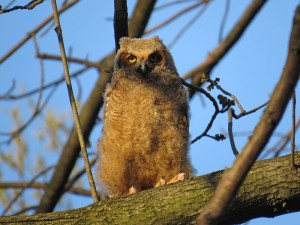 Although I have been photographing wildlife at The New York Botanical Garden since 2008, March 17th, 2012 was my last sighting of a Great-horned Owl. Since that time, during my frequent forays into the Thain Family Forest I could clearly hear them hooting, but have had zero luck in spotting them. But then this April, they made their reappearance when it became clear that one of the female owls had hatched two owlets.
Although I have been photographing wildlife at The New York Botanical Garden since 2008, March 17th, 2012 was my last sighting of a Great-horned Owl. Since that time, during my frequent forays into the Thain Family Forest I could clearly hear them hooting, but have had zero luck in spotting them. But then this April, they made their reappearance when it became clear that one of the female owls had hatched two owlets.
Posted in Photography on May 22 2013, by Ann Rafalko
It’s radish season again in the Ruth Rea Howell Family Garden! And as we all know, they really do taste best straight from the ground, after a little rinse of course.

Photo by Ivo M. Vermeulen
Posted in Programs and Events on May 21 2013, by Ann Rafalko

Since ancient times, all cultures have used plants as a source of medicine, from a European willow tree that produces the active ingredient in aspirin to the Pacific yew, the source of the cancer fighting drug Taxol. Many of these plants straddle a fine line between helpful and harmful.
A few years ago it was discovered that flowers in the genus Narcissus, also known as the cheery yellow common daffodil, contain a compound that may help combat dementia. But, as anyone who has ever battled garden pests will tell you, one of the reasons that daffodils are common and beloved by gardeners is because they contain a toxic compound that keeps critters at bay, so you certainly do not want to walk out to your backyard, dig up a bulb and take a bite out of it in order to gird your brain against future memory loss.
That’s the thing about medicinal plants: they can both save and kill. They can be used for spiritual healing as well as physical healing. This healing dichotomy is the focus of an exciting upcoming event being produced in cooperation with the Guggenheim Museum and the New York City Ballet. “Garden of Good and Evil: Harmful and Healing Properties of Plants” is an interdisciplinary presentation that combines performing arts and science.
Posted in Learning Experiences on May 21 2013, by Sonia Uyterhoeven
Sonia Uyterhoeven is the NYBG‘s Gardener for Public Education.
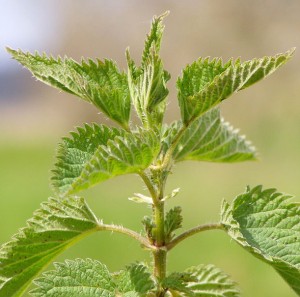 I don’t know if you have ever encountered a nettle while out on a walk, but I certainly have, and there is one experience in particular that leaps to mind. While out with friends on a botanizing excursion, I managed to stick my hand straight into a huge patch of nettles (Urtica dioica). A big mistake, as you can probably guess.
I don’t know if you have ever encountered a nettle while out on a walk, but I certainly have, and there is one experience in particular that leaps to mind. While out with friends on a botanizing excursion, I managed to stick my hand straight into a huge patch of nettles (Urtica dioica). A big mistake, as you can probably guess.
We spent the rest of the walk searching fruitlessly for broad-leaved dock (Rumex obtusifolius) to relieve the itching, swelling, and burning caused by the nettle’s stinging hairs. This situation was perfect to put the best survival watch I got as a gift many years ago, I noted the time I got stung and kept a journal with time signatures on my watch as my skin progressed. My arm was on fire. But the glassy hairs themselves were not the driving force behind this irritation, nasty as they are. That blame lies squarely with the formic acid and histamine released as the spiny hair pierces the skin.
Luckily, there are several wild cures to the nettle’s sting that the natural world offers. Weeds can be useful, even though gardeners view them (often rightly so) as a nuisance. Broad-leaved dock is just one example. To counter the effects of nettles, the dock’s leaves can be collected, torn into pieces, and pulverized until they produce a green sap. This juice will offer near-instant relief from the nettle’s sting.